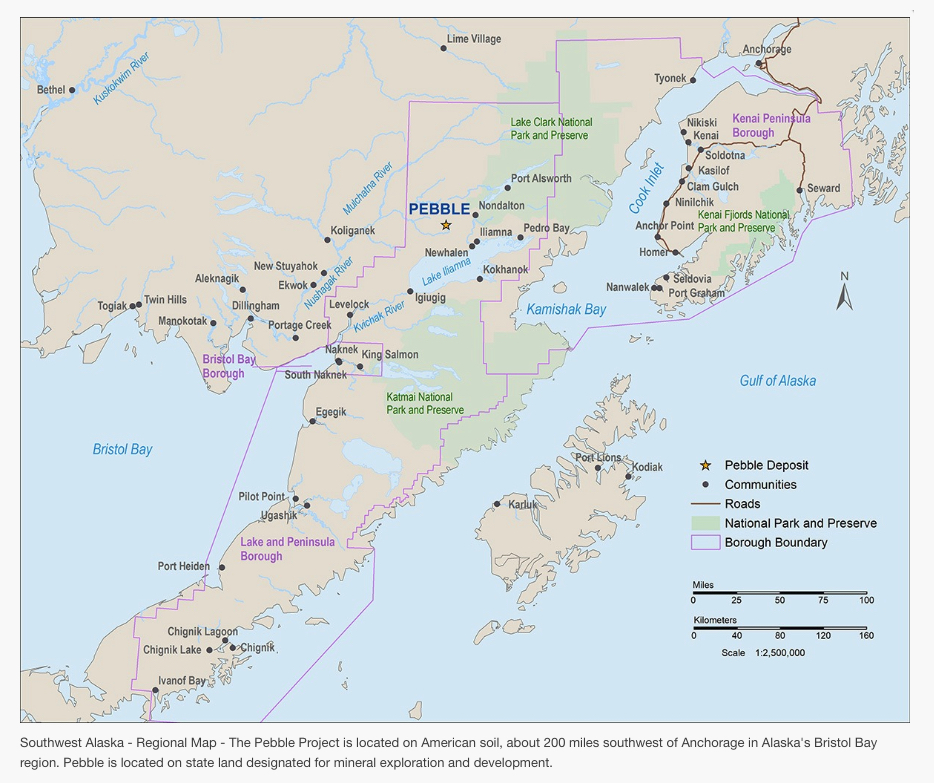A leaked draft of an environmental impact statement (EIS) on Northern Dynasty’s (TSX: NDM) proposed copper-gold mine in Alaska has brighten up its prospects, suggesting nearby terrestrial freshwater resources and downstream fisheries could co-exist with the project.
While the US Army Corps of
Engineers’ document is not final, it could mean the government is closer to
issuing a long-sought permit for the $100 billion copper-gold mine in
the Bristol Bay, southwest Alaska.
Shares jumped up as much 9.4% to 70 cents on the news on Wednesday, to close at 69 cents, the highest value so far this year.
If permitted, the $100 billion copper-gold Alaska project would be North America’s largest mine
If permitted, Pebble would be North
America’s largest mine, according to a study by the Center for Science in
Public Participation. Current resource estimate includes 6.5 billion tonnes in
the measured and indicated categories containing 57 billion pounds of copper
and 71 million ounces of gold, 3.4 billion pounds of molybdenum and 345 million
silver ounces.
Northern Dynasty said the draft
document is currently under review by various regulatory agencies, including
the US Environmental Protection Agency (EPA) and Alaska tribes. It also said
that all data gaps have been filled and that the final EIS is slated for
release by mid-year.
Pebble’s development has been surrounded by controversy and delays, including the EPA’s decision in 2014 to propose restricting the discharge of mining waste and other material in the area.
Criticism prompted the
Vancouver-based company to submit a new, smaller mine plan that includes lined
tailings, and discard the use of cyanide in the gold extraction process.
Pebble began moving forward after the change in US administration. In July last year, Northern Dynasty scored a big win after the EPA scrapped the proposed restrictions on mining operations in Alaska’s Bristol Bay, which prevented the project’s consideration.

For decades, explorers and developers have been attracted to resources-rich southwestern Alaska, known for holding significant deposits of gold, copper, molybdenum and other minerals near the headwaters of two rivers flowing into Bristol Bay.
But conservationists, local activists, fishermen and federal regulators have argued that industrial, open-pit mining operations to extract the lode threatens the region’s thriving sockeye salmon fishery.
